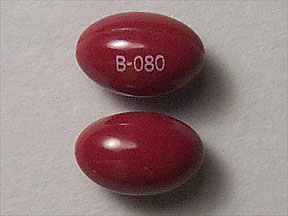Chloral Hydrate Dosage
Applies to the following strengths: 500 mg/5 mL; 250 mg/5 mL; 500 mg; 325 mg; 650 mg
Usual Adult Dose for:
Usual Geriatric Dose for:
Usual Pediatric Dose for:
Additional dosage information:
Usual Adult Dose for Insomnia
- Hypnotic: 500 to 1000 mg orally 15 to 30 minutes before bedtime; use for less than 2 weeks.
- Premedicant: 500 to 1000 mg orally 30 minutes prior to surgery or procedure.
- Sedative: 250 mg 3 times a day after meals; maximum dose of 2000 mg/day.
Uses:
- Short-term treatment as a sedative or hypnotic.
- To reduce anxiety or produce sedation or sleep prior to surgery or procedures.
Usual Adult Dose for Sedation
- Hypnotic: 500 to 1000 mg orally 15 to 30 minutes before bedtime; use for less than 2 weeks.
- Premedicant: 500 to 1000 mg orally 30 minutes prior to surgery or procedure.
- Sedative: 250 mg 3 times a day after meals; maximum dose of 2000 mg/day.
Uses:
- Short-term treatment as a sedative or hypnotic.
- To reduce anxiety or produce sedation or sleep prior to surgery or procedures.
Usual Geriatric Dose for Insomnia
- Hypnotic Use: Start with 250 mg orally 15 to 30 minutes before bedtime.
- Age-Related Hepatic/Renal Function Impairment, with Debilitations, and/or Prone to CNS Depression: A dose reduction may be required; however, no specific guidelines have been suggested.
Uses:
- Short-term treatment as a sedative or hypnotic.
- To reduce anxiety or produce sedation or sleep prior to surgery or procedures.
Usual Geriatric Dose for Sedation
- Hypnotic Use: Start with 250 mg orally 15 to 30 minutes before bedtime.
- Age-Related Hepatic/Renal Function Impairment, with Debilitations, and/or Prone to CNS Depression: A dose reduction may be required; however, no specific guidelines have been suggested.
Uses:
- Short-term treatment as a sedative or hypnotic.
- To reduce anxiety or produce sedation or sleep prior to surgery or procedures.
Usual Pediatric Dose for Insomnia
- Hypnotic: 25 to 50 mg/kg orally at bedtime; use for less than 2 weeks.
- Premedicant: 25 to 50 mg/kg orally 30 minutes prior to surgery or procedure; if necessary, may repeat using half the dose in 30 minutes.
- Maximum Single Dose: 1000 mg
Uses:
- Short-term treatment as a sedative or hypnotic.
- To reduce anxiety or produce sedation or sleep prior to surgery or procedures.
Usual Pediatric Dose for Sedation
- Hypnotic: 25 to 50 mg/kg orally at bedtime; use for less than 2 weeks.
- Premedicant: 25 to 50 mg/kg orally 30 minutes prior to surgery or procedure; if necessary, may repeat using half the dose in 30 minutes.
- Maximum Single Dose: 1000 mg
Uses:
- Short-term treatment as a sedative or hypnotic.
- To reduce anxiety or produce sedation or sleep prior to surgery or procedures.
Renal Dose Adjustments
- Mild Renal Dysfunction: No adjustment recommended.
- Moderate Renal Dysfunction: Not recommended.
- Severe Renal Dysfunction (CrCl less than 48 mL/min): Contraindicated.
Liver Dose Adjustments
- Mild to Moderate Hepatic Impairment: Data not available.
- Severe Hepatic Impairment: Contraindicated.
Precautions
CA BOXED SERIOUS WARNINGS AND PRECAUTIONS:
- This drug should not be administered to children by nonmedical personnel or in an unsupervised medical setting. Patients should be monitored for CNS and respiratory depressive effects, particularly with concurrent use of other sedatives or opioids. Deaths associated with the use of this drug for sedation prior to diagnostic or therapeutic procedures have been reported, particularly in pediatric patients. Particular care must be taken in calculating and administering the proper dose.
- Use of this drug for sedation in children with adenoidal hypertrophy and obstructive sleep apnea has been reported to cause episodes of life-threatening respiratory obstruction. Children with obstructive sleep apnea from other causes may be at risk as well. Laryngeal edema resulting in severe respiratory difficulty in a child has also been reported.
- Due to the risk of toxicity associated with overdose, this drug should be given in limited quantities to patients with clinical depression/suicidality.
Consult WARNINGS section for additional precautions.
Dialysis
- Hemodialysis: Significantly increases the clearance of both the parent drug and trichloroethanol; however, no dose adjustment guidelines have been reported.
- Peritoneal Dialysis: Data not available
Other Comments
Administration Advice:
- May administer this drug rectally as a retention enema by dissolving the liquid in cottonseed or olive oil or in a hydrophilic polyethylene glycol base; doses for oral and rectal routes are equivalent.
- Take this drug with water or other liquids.
- Individualize dosage for each patient.
- Use as an adjunct to non-pharmacological therapies.
Preparation Techniques:
- Consult the manufacturer product information.
General:
- This drug has been shown to induce near natural sleep without altering the REM/Non-REM ratio.
Patient Advice:
- Avoid potentially dangerous activities such as driving and operating machinery until you know how this drug affects you.
- Avoid alcohol while taking this drug.
More about chloral hydrate
- Check interactions
- Compare alternatives
- Reviews (20)
- Side effects
- During pregnancy
- Drug class: miscellaneous anxiolytics, sedatives and hypnotics
- Breastfeeding
Patient resources
Other brands
Related treatment guides
See also:
Further information
Always consult your healthcare provider to ensure the information displayed on this page applies to your personal circumstances.


